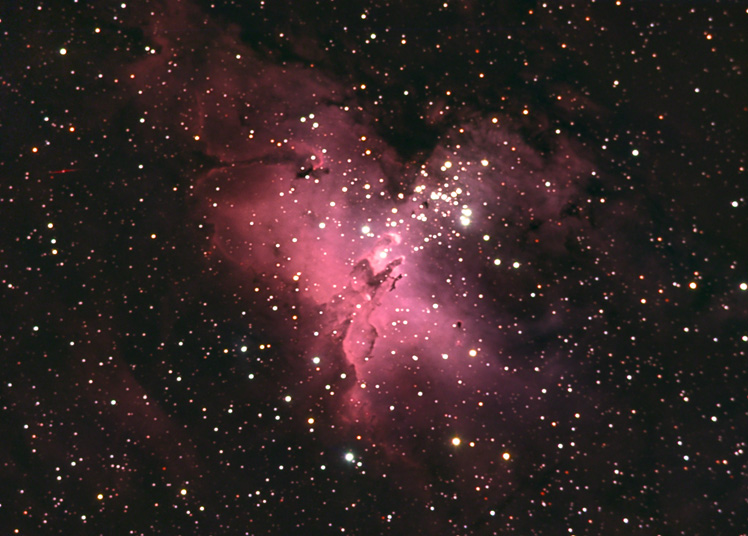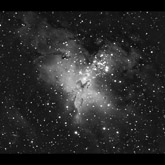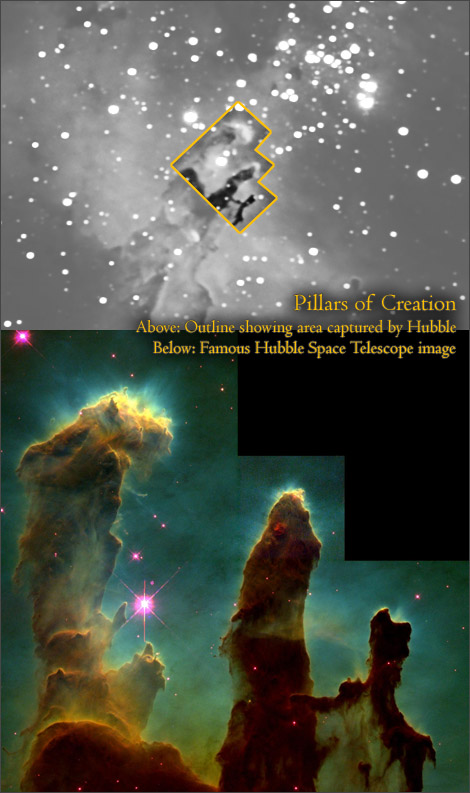The science of astronomy is hobbled by the fact we cannot (yet) visit most of the places we want to study. All we can do is study what we can see from afar. In Galileo's time, this meant putting your eye up to a telescope and recording what you saw, but since the invention of photography, astronomers have been studying the sky by taking pictures of it.
Making a virtue out of necessity, astronomers have become very good at taking pictures of the sky and of the amazing objects it contains. I have no doubt this emphasis on visual images—so much more visceral than the dry graphs, equations, and words of other sciences—is responsible for the general popularity of astronomy.
The Hubble Space Telescope picture of the core of M16, known as the "Pillars of Creation," is a perfect example. The massive columns of dust illuminated by brilliant stars look beautiful and awe-inspiring, even if you don't know they are star-forming factories more than a light-year tall. I had seen pictures of M16 before (pictures not unlike my amateur shot above) but it was not until I saw the Hubble photo that I felt like I was looking at a real place. You don't need a PhD in astrophysics to appreciate what you're seeing.
Sure, it would be nice if astronomers had more than pictures to study the universe. But until we discover faster-than-light travel, we'll have to settle for what we've got. Even then it may not help in the case of M16. In 2007, scientists taking pictures of M16 (this time with the Spitzer Space Telescope) raised the possibility that a supernova explosion has obliterated the famous pillars. The pillars appear intact to us on Earth because the light from the destruction has not yet reached us (and may not reach us for another 1,000 years).
If true, then pictures of M16 and its iconic pillars are even more special. They might be all we have left of it.
Imaging Notes
M16 is a large and bright target, suitable for all experience levels and equipment. Because the nebula emits red light from hydrogen you will find the best detail is in the red channel. If you are taking an LRGB image you should consider mixing some of the red channel into the luminance channel to increase the contrast and detail in the nebula. If you are taking an RGB image you could synthesize a luminance channel by combining the three color channels with a heavy emphasis on red. In the image above, I synthesized a luminance channel using a 3:1:1 ratio for red, green, and blue.
Credit: J. Hester, P. Scowen (ASU), HST, NASA


